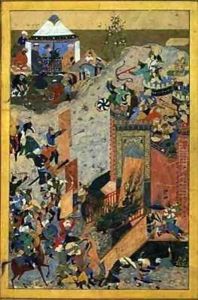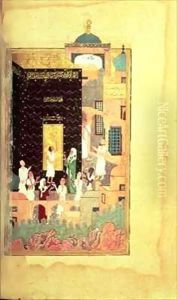(Kamal al-Din Bihzad) Bihzad Paintings
Kamal al-Din Bihzad, also known as Bihzad or Behzad, was one of the most prominent and influential Persian painters of the late 15th and early 16th centuries. His exact birth date is not known, but it is believed he was born around 1450 in the city of Herat, which is now in modern-day Afghanistan. His early life and training are somewhat obscure, but it is thought that he studied under the painter Baysunghur Mirza in Herat, who was a grandson of the renowned Timurid ruler, Timur.
Bihzad's work is characterized by its incredible detail, vibrant colors, and complex composition. He is known for his mastery of miniature painting, a style that was highly valued in Persian book arts. His illustrations adorned many literary and poetic works, with one of his most famous contributions being to the manuscript of the 'Bustan' by Sa'di and the 'Shahnameh' of Ferdowsi. He headed the royal atelier under the patronage of Husayn Bayqarah, the Timurid ruler of Herat, and later served the Safavid rulers after the city's conquest.
Throughout his career, Bihzad's influence extended beyond his own works. He was a master teacher and an administrator of the royal atelier, training a generation of artists who would continue and disseminate his style and techniques throughout the Persian empire. His legacy lies not only in his artworks but also in the stylistic traditions he helped to establish, which continued to be influential long after his death.
Bihzad's exact year of death is also not clearly documented, but he is believed to have died around 1535. Despite the uncertainties surrounding his life, his impact on the world of Islamic art is undeniable. His works are preserved in several major museums around the world, serving as a testament to his skill and enduring influence on Persian miniature painting.

